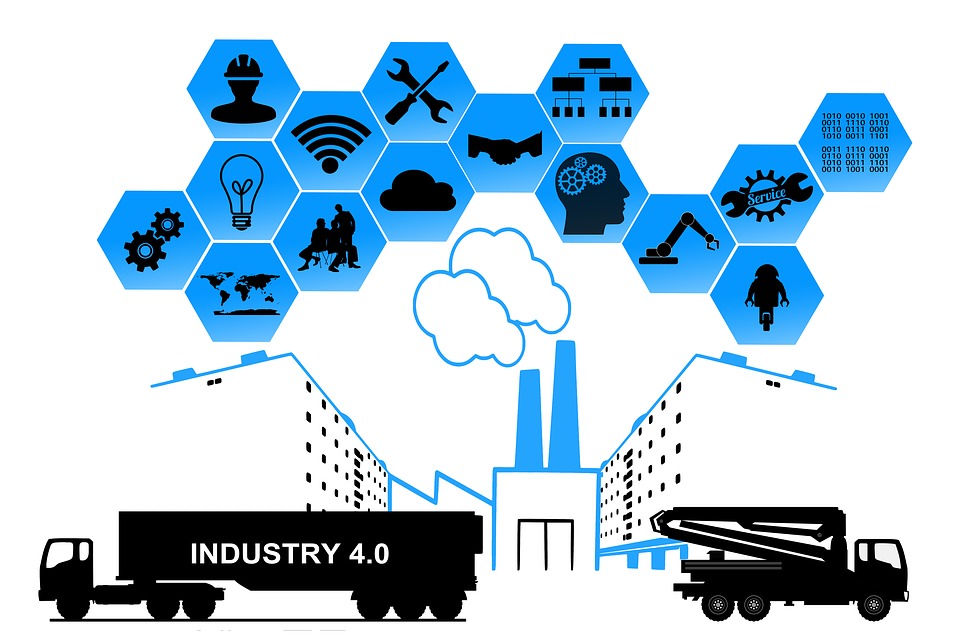Industry 4.0 – the Big Picture

Industry 4.0 is a name for the current trend of automation and data exchange in manufacturing technologies to create “smart factories”. It includes cyber-physical systems, the Internet of things, cloud computing and cognitive computing. What follows is an attempt to distill this convergence of trends to the most basic level.
- The ultimate goal of Industry 4.0 is highly flexible mass production with minimal resource or time waste
- In smart factories, products, machinery and controls are interconnected wirelessly
- Products (via RFID tags, etc) communicate processing instructions directly to moving and processing machinery, and quality assurance (QA) sensors are used to validate correct processing
- The movement, processing and QA systems comprise a module, and decision logic is incorporated at the modular level, allowing for decentralized decision making
- The controls of these modules are interlinked, allowing for cross module decision making
- Data is collected at all steps of the process and used to create a detailed “virtual” copy of the physical factory
- The controls are also connected to the internet, allowing access to other data to aid decision making
- Factories will also be networked together, allowing for autonomous decision-making across multi-site manufacturing systems
All of this amounts to the ability to use data collection, analytics and artificial intelligence to optimize manufacturing to achieve better speed, quality, cost and reduce waste. However, with it will come needs for greater customization, reliability, stability, security and intensive maintenance. There will also be needs for tailored Industry 4.0 solutions for different manufacturing and service settings. Though Industry 4.0 will create incremental efficiency gains in manufacturing, it is in creating solutions for these customization, maintenance and security needs that will yield many of the most lucrative opportunities.
